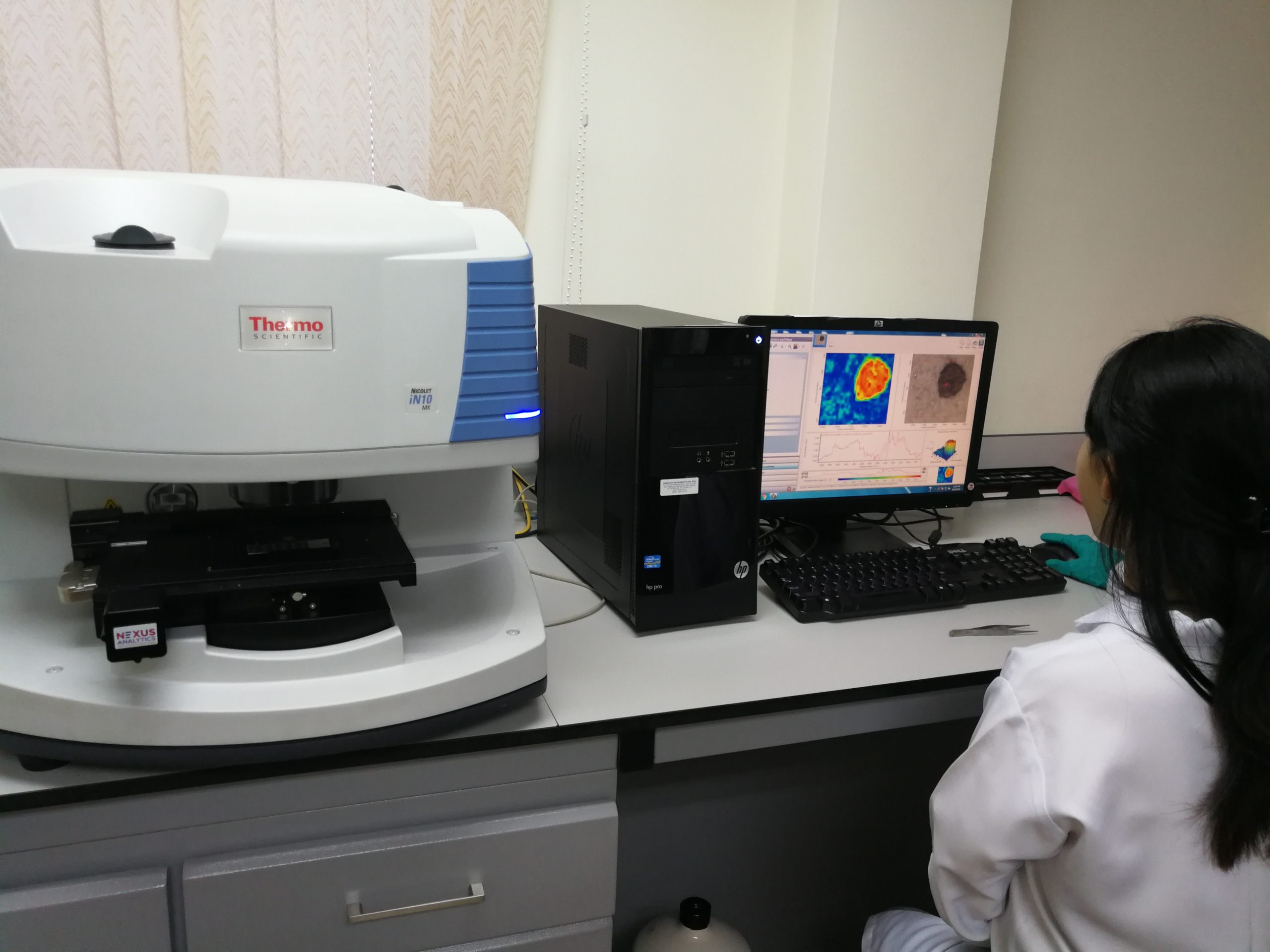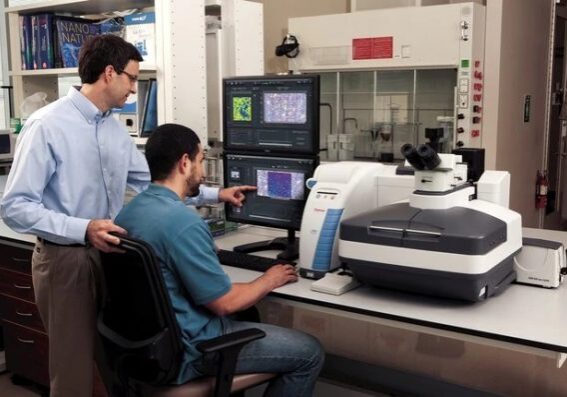WHAT IS RAMAN SPECTROSCOPY?
Raman spectroscopy is a molecular analysis technique that has been adopted by industrial, forensic, environmental and research scientists to:
• Identify and quantify unknown materials (e.g., Forensic evidence, art restoration)
• Understand molecular structure (e.g., crystallinity, polymorphism)
• Study spatial relationships between sample components (e.g., failure/defect analysis, depth profiling)

Advantages of Raman Spectroscopy
You may be familiar with FTIR spectroscopy and curious about how you can use Raman spectroscopy to complement your FTIR analysis.
Consider the advantages of Raman spectral analysis below to help you solve problems and reveal new
information about your advanced materials.
Save time and preserve your sample
Save and resolve small samples
Measure aqueous samples
Study carbon nanomaterials
Measure samples through transparent containers
Characterize morphology as well as chemistry
What are the applications of Raman spectroscopy?
- Rapid imaging for API distribution analysis
- Non-destructive analysis and minimal sample preparation
- Identification of isomers, hydrates, and polymorphs
Featured Raman spectroscopy videos
Raman Spectroscopy Resources:
Raman Spectroscopy Academy:
Enhance your understanding of Raman spectroscopy when you visit our Raman Spectroscopy Academy. Here you will find
- Video tutorials on Raman fundamentals
- Advanced topics on Raman applications
- Raman instrument guide
Raman Spectroscopy Webinar Presentations:
We present an ongoing series of complimentary half-hour to one-hour webinars that reveal how the Thermo Scientific Raman instrumentation can improve your work. Check out our full library of Raman webinars, covering a variety of sample types such as
- Carbons Nanomaterials
- Forensics
- Life Sciences
- Minerals, Geology, and Gems
- Pharmaceuticals
- Polymers
Raman Spectrometer Product Guide:
See our Raman systems in action from the comfort of your home or office. Contact us today for more information!



